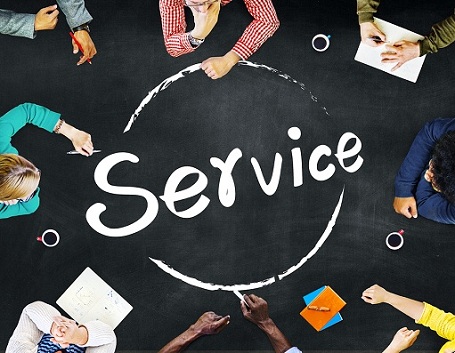
Usman Ghani (February 2, 2016)
One of the most important factors impacting customer satisfaction includes efficient and smooth customer service delivery. Many businesses fail because managers don’t realize the importance of delivering a seamless and streamlined customer experience for everyone. Regardless of the type of business or size, the success and growth of a company hinges upon quality customer service. ‘Customer Experience Impact Report’ published in 2011, highlighted that more than 55% of customers commit to a company if its customer service team helps them find information or provides help they need. Some of the factors to consider for smooth customer service delivery are as follows:
Businesses should be able to effectively manage traffic and customer interactions. They must be able to anticipate the number of customers they might have to deal with and accordingly plan and organize. Businesses often experience crunch time when too many customers arrive or contact CSRs through various channels including email, live chat or phone. There should be adequate resources to deliver a smooth customer service experience even during times of high traffic. For example, a retail store might experience an increased influx of customers during the holiday season or sales, in which case, the customer service department should plan ahead and hire more CSRs on temporary basis to handle the increased workload.
In order to deliver a smooth customer experience, it is important to develop and maintain a streamlined transactional procedure. The transaction process should be simple, hence easy for customers to understand. The company should develop a process in which each step is seamless and traceable to facilitate customers in the best way possible. For example, some e-commerce websites have very complex procedures in place that deter customers from shopping easily: either the check-out systems are inefficient or navigating through the website is confusing and complex. All business, whether online or not, must work to streamline processes to eliminate any hurdles to a smooth shopping experience. Moreover, any redundancies in the process must be eliminated since they become a hurdle in quick, smooth transactions.
First response time is an important metric when it comes to smooth customer service delivery. It is the time it takes for CSRs to get back to customers when first contact is made. If it takes days for CSRs to allocate time to interact with customers after the first contact, it reflects a lazy and laid-back customer service response. Timely and effective communication can greatly impact the overall service experience. Companies should aim to offer multichannel communication to facilitate customers through an integrated communication infrastructure.
Other metrics such as ‘Problem resolution time’ should also be taken into account while analyzing the quality of service delivery. Customer Service Trainings should be conducted on a regular basis to develop required skills for the staff to deliver efficient service.
Many companies have introduced automation and digitalization of the service delivery process. Kiosks, self-check-out portals and online appointment systems have become exceedingly popular in the modern economy. Widespread automation in service delivery has numerous advantages including efficiency and overall smoother customer experience. It reduces the time to process requests, in addition to being cost efficient. Moreover, automated systems can work 24 hours a day, 365 days a year, which adds to their appeal for both, customers and the company. While automation is mostly beneficial and adds to convenience, companies must ensure that human touch is not completely eliminated. It is still important to make personal contact with customers in order to receive feedback and handle complex issues that might be beyond the scope of automation and technology.

Healthcare workers are entrusted with the great responsibility of caring for people. In order to continually offer comfort and care to people, there are certain skills that healthcare professionals need to master. Of course there are the obvious ones related...
Read More
Creative thinking is one of the most important and sought after soft skills that you need to acquire in an increasingly digital landscape of 2021 and beyond. Creative thinking skills are required in many different job roles to come up...
Read More
Sales are the backbone of any business and great salespeople are an asset for the company. Some people are naturally gifted in the art of persuasive communication and negotiation skills required to convince clients and effectively sell more. However, certain...
Read More